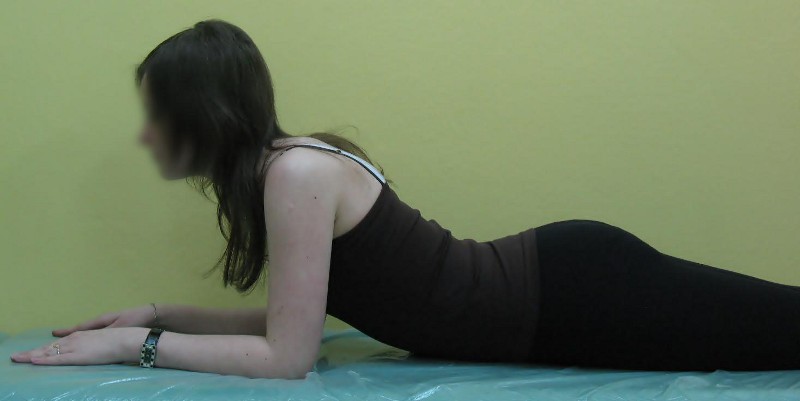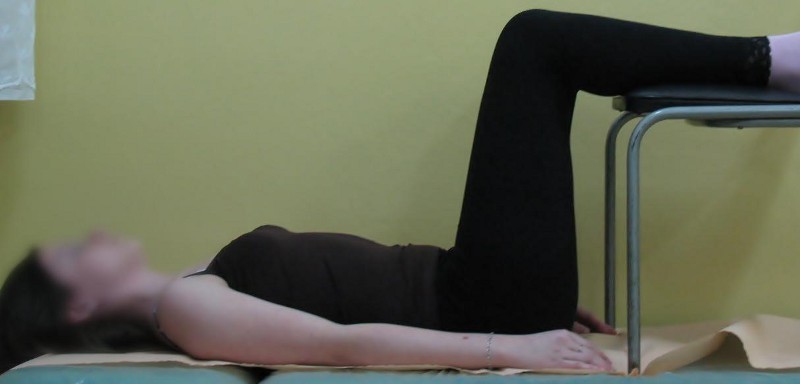Spine - Injuries and chronic ilnesses
The spine is built of vertebrae and intervertebral discs that are placed between the vertebral corpuses. It's built of five segments that vary in the structures and mobility and frequency of pathology occurence. The cervical and lumbar segments are the most mobile spine segments. The intervertebral discs are most frequently damaged in these segments. In the thoracic segment vertebrae are connected flexibly with ribs and together with the breastbone they make up the the thoracic cage (widely known as the chest). Vertebrae of the two lowest segments are united with the aitchbone, which is wedged between the two pelvic bones (connnected with them in the sacro-iliac joints) and the lowest coccyx. The aitchbone closes the ring called the pelvis. The spine seen from the side has natural curves to the front (lordosis) – in the cervical and lumbar segments and to the back (kyphosis) – in the thoracic and sacrococcygeus segments. Facet joints (between vertebrae) and flexibility of the intervertebral discs secure normal mobility of the spine. The stability of the spine is secured by tracts of connective tissue that unite the spine (the so-called ligaments) and by the neuromuscular control, which is responsible for the tension and balance of variuos muscle groups.
Every one of vertebrae has a cord hole. The connected holes make up a tunnel through which runs the spinal cord. The spinal cord has nerve roots on every level that stick out from the tunnel through special intervertebral holes on both sides of the spine.
The intervertebral disc is built of an internal gelatinous nucleus surrounded with a strong fibrous ring. During spine movements the nucleus puts pressure on the fibrous ring and if the pressure is too big or lasts too long, the ring may be injured or disconnected (disc prominence or herniation). Frequently, it is the injury of the intervertebral disc that causes pressure on the nerves and pain ailments of the spine.
We feel spine pain when nerve endings are irritated. There are two types of nerve irritation in the spine:
- Chemical: pain is steady, started not long ago due to an injury, it intensifies in all movements, there's no position that brings relief. Swelling, redness and skin warmth. In such case we must see a doctor in order to receive anti inflammatory treatment. Care should be taken to keep the affected limb at rest. Only when the treatment has been successful, we can start rehabilitation.
- Mechanical: most frequently pain is not steady but even if it is – some movements may reduce it, other – intensify it. The patient is able to say which movements reduce the pain and which positions bring relief.
If we deal with mechanical pain we can lay on the stomach (picture 1). Should this position reduce or ablate the ailments, we can lean on our elbows in order to obtain hyperextension (picture 2). If the positions help, we should spend most of our time lying like this. If they don't help or, even worse, deteriorate our condition, we must immediately stop doing this kind of exercises.
 Picture 1.
Picture 1.

Picture 2.
We can try to rest the spine by lying on the back so that the legs are flexed at 90 degrees in the hips and knees and fully propped up (picture 3). This kind of rest may be used only when it brings noticeable relief. Stop doing it in any other case.

Picture 3.
The above positions may be a relief in suffering but they can't replace a complex treatment and rehabilitation, so if you have serious spine problems, always see a specialist.
When to see a doctor?
Spine pains are accompanied by:
- recent neoplastic disease,
- weight loss without a visible reason,
- general bad health condition,
- pain which increases at rest,
- neurological symptoms – irradiation of pain to the limbs, numbness of the limbs, foot drop or paresis of the extremities,
- recent severe injury or a small injury which has produced severe ailments,
- dizziness, tinnitus, nausea and abnormal vision – if the problem concerns the cervical segment.
More about the spine:
- Chosen physiotherapeutic methods of spine diseases treatment
- Preventive exercises of the spine pain ailments
Written by: Przemyslaw Lawski

